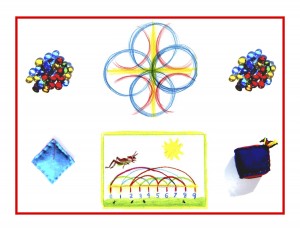Day 78
For one year, 365 days, this blog will address the Common Core Standards from the perspective of creating an alternate, ambient learning environment for math. Ambient is defined as “existing or present on all sides, an all-encompassing atmosphere.” And ambient music is defined as: “Quiet and relaxing with melodies that repeat many times.”
Why ambient? A math teaching style that’s whole and all encompassing, with themes that repeat many times through the years, is most likely to be effective and successful. Today’s post will address the “Writing” segment of the CCSS Language Arts Standards for Grade 1. All seven of these standards reflect learning and material that will be present in later grades. The rich story and literature content of the curriculum allows the 6-7 year old the freedom to develop capacities that are stunted and neglected with an emphasis on lessons and materials that are overly abstract and developmentally inappropriate.
I will summarize the standards here in blue rather than listing each separately since they’re a poor match with what might be considered appropriate and effective for Grade 1. The Common Core’s approach is “top-down,” meaning that standards designed to produce college and career ready adults are filtered down (not so much watered down) from Grade 12 through Kindergarten. “Bottom up” would be a more developmentally appropriate approach: beginning with seed curriculum to produce a healthier (and superior) end product.
The CCSS Language Arts Standards for Writing, Grade 1 are divided into three groups:
1) Text Types and Purposes
Write opinion pieces about a topic of choice or a book, with reasons and closure.
Write informative/expository texts about a chosen topic, factual with closure.
Write narratives that include two or more events with time-sequencing and closure.
2) Production and Distribution of Writing
With adult guidance and support, focus on a topic, take questions/suggestions from peers, add details.
With adult guidance and support, collaborate with peers to use a variety of digital tools to produce/publish writing.
3) Research to Build and Present Knowledge
Share in research/writing projects like reviewing “how-to” books, then using them to write a list of instructions.
With adult guidance and support, gather information from experience or provided sources to answer a question.
This is confusing material for both teachers and students, reflected in radically increased lesson prep time and translated into worksheets for both seat work at school and overly time consuming homework. And as such, it is an inefficient use of teacher/student abilities and resources. First graders are not developmentally ready to take on these highly abstract tasks. Rather, exposure to good literature through storytelling or reflections on relationship to others and the world through nature stories can provide the necessary preparation for excellent writing skills later on.
If seeds such as these are planted in good, nurturing soil, watered and cared for, college and career ready adults will be the end result. But beyond college and career readiness, if the stages of development are properly heeded and the child is gradually gifted with the fruits of human heritage on this planet, s/he will carry a truly moral consciousness forward to address any and all of the future challenges presently developing on so many fronts.
Knowledge ensues in an environment dedicated to imaginative, creative knowing, where student and teacher alike surrender to the ensuing of that knowledge as a worthy goal. More CCSS ELA Standards tomorrow!












